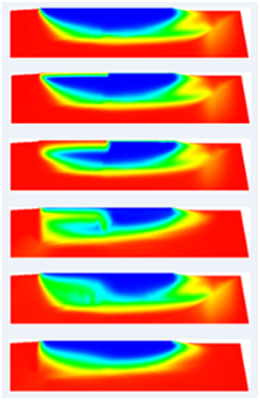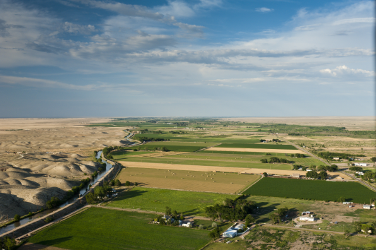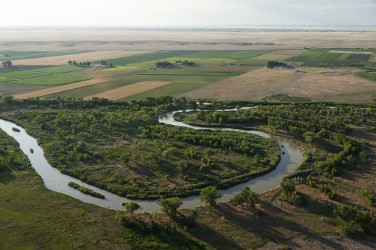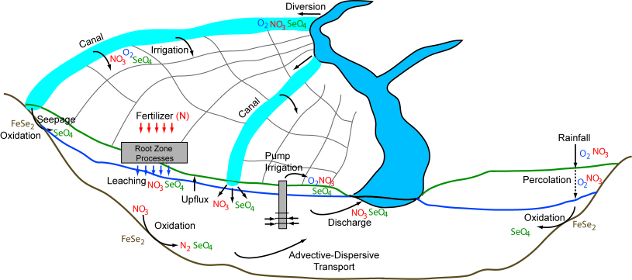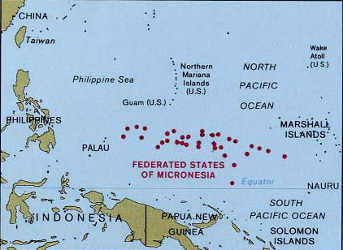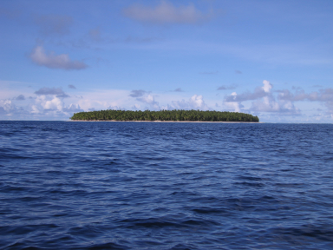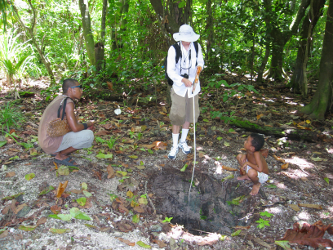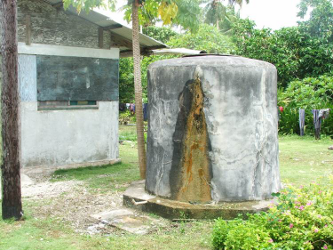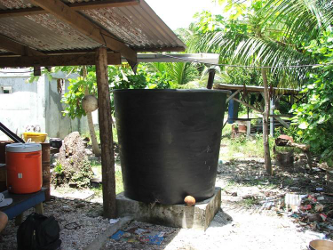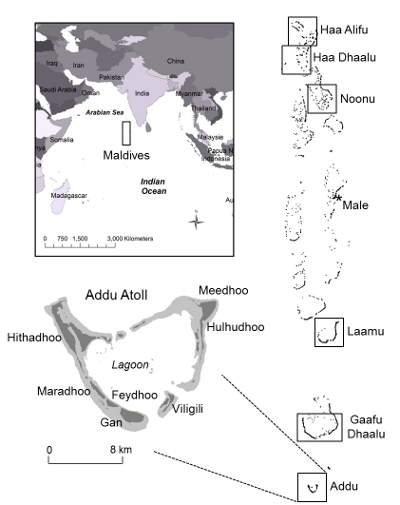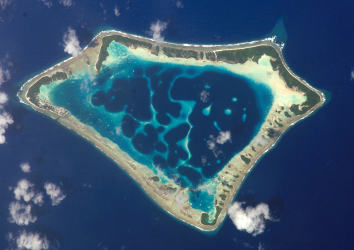My research interests are focused on the assessment of water quantity and water quality in watersheds of various scales and climates, particularly regarding the following:
- Water supply for communities of small oceanic islands
- Sustainable water supply for developing countries
- The fate and transport of selenium in stream-aquifer systems
- The fate and transport of nutrients (nitrogen, phosphorus) in stream-aquifer systems
- Optimal remediation strategies for selenium and nutrient contamination
- The fate and transport of salinity species in cultivated, semi-arid regions
- Development and modification of groundwater and surface water flow and solute transport numerical modeling codes
- Surface water-groundwater interaction and associated mass transport of chemical species
- Estimation of aquifer parameters using data assimilation techniques
Past and current research topics include:
The contamination of river basins by selenium and nitrate is a common problem in many watersheds of the world. Selenium contamination of groundwater and surface water in the western United States particularly is acute. Our research deals with assessing the source and mobilization of selenium, its reactive transport through the aquifer and stream network, and water- and land-management practices that could be implemented to remediate the contamination in the Lower Arkansas River Valley (LARV) in southeastern Colorado. Since selenium is affected chemically by nitrate, nitrate fate and transport often is included in data collection and modeling.
- Results of field and laboratory studies highlighted the dependency of Selenium speciation and transformation on the presence of Nitrate.
- To provide a groundwater solute reactive transport model that could be applied to both the unsaturated zone and the saturated zone, the RT3D model was modified to handle unsaturated zone flow and receive input from a MODFLOW-UZF simulation, with the resulting UZF-RT3D model tested for accuracy against published models.
- A Selenium and Nitrogen chemical reaction module was developed for UZF-RT3D, with the ability to handle mass inputs from fertilizer, irrigation water, and canal seepage; mass cycling in the soil zone; leaching and 3D chemical reactive transport in the aquifer; and mass loading to the stream network via groundwater discharge. The resulting model was tested against collected soil profile Selenium and Nitrate data. The calibration and testing of the model to the regional-scale study site along the Arkansas River in southeastern Colorado was recently completed.
- Currently, best-management practices (BMPs) are being analyzed for effectiveness in decreasing mass loadings of Selenium and Nitrate from the aquifer to the Arkansas River and its tributaries. Also, a fully coupled groundwater-surface water solute reactive transport model is being developed by linking UZF-RT3D with the OTIS in-stream solute transport model, with in-stream water quality modeling processes for Selenium and Nitrogen species imbedded into OTIS.
- A current study funded by the USDA-NIFA-AFRI program aims at investigating the movement and storage of N and P in the Lower Arkansas River Valley in southeastern Colorado under various climate scenarios. BMPs for N and P also will be explored. To accomplish these objectives, the SWAT model and the UZF-RT3D model will be coupled to provide a framework for simulating the fate and transport of N and P in the surface-subsurface-stream watershed system (shown below).
- Groundwater supply of small oceanic islands under varying climate conditions for the Federated States of Micronesia.
Using the USGS SUTRA numerical model, which simulates density-dependent groundwater flow and solute transport, the dynamics of the freshwater lens of atoll islands is simulated during average climatic conditions and drought conditions. Using modeling results, a simple algebraic model was developed, which relates the freshwater lens thickness to island width, annual rainfall rate, and geologic characteristics (reef flat plate presence, hydraulic conductivity, etc…). Results demonstrate the fragile existence of the lens, with drought conditions causing complete depletion of fresh groundwater for most of the islands of the Federated States of Micronesia. Current work deals with estimating future groundwater resources as influenced by sea level rise and variable rainfall patterns. - Recovery of atoll island aquifers after marine storm-surge overwash events
Another threat for atoll island fresh groundwater is marine storm-surge overwash events, in which the island is inundated with seawater. Seawater infiltrates the ground surface and mixes with and salinizes the fresh groundwater, thereby destroying an important water source for island residents. Simulation results for a 400-m wide island show that months to years are required for complete recovery of the aquifer and build-up of the freshwater lens after an overwash event. The following figure shows the salinization and recovery of the freshwater lens during and after an overwash event. Current work is aimed at performing an overwash-recovery analysis for different sized islands in different climatic regions. - Rainwater catchment systems supply of island communities within the Federated States of Micronesia
Stored rainfall constitutes another water source for atoll island communities. Recent work used a water balance model and historical rainfall rates to determine the operation of rainwater catchment systems in the Federated States of Micronesia (FSM) under average rainfall and drought conditions. The model was able to reproduce the depletion of stored rainwater during the intense 1998 drought in the eastern FSM, and was used to determine the required roof catchment area and storage tank size to be able to maintain a sufficient quantity of water during a major drought. - Current and future groundwater resources assessment for the Republic of Maldives
A project with the World Bank in 2012-2013 used the SUTRA model and the algebraic model to estimate freshwater lens thickness and freshwater lens volume under recent climatic conditions as well as future climatic conditions (using output from the General Circulation Models participating in CMIP5) for the atoll islands of the Republic of Maldives. The lens thickness for a variety of island sizes and geographic regions were simulated for the years 1998-2011, and then through the year 2050 using estimated monthly rainfall rates.
